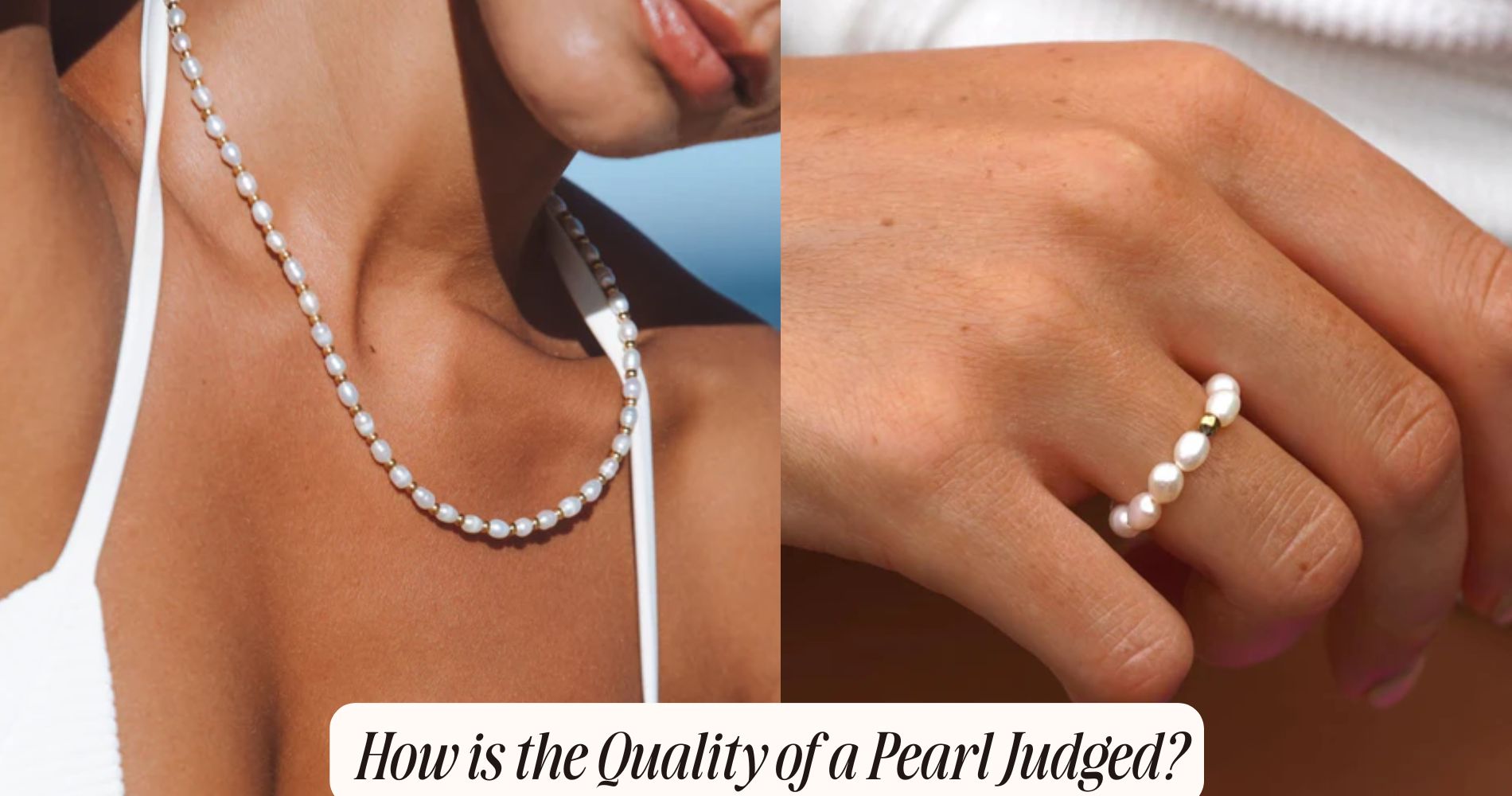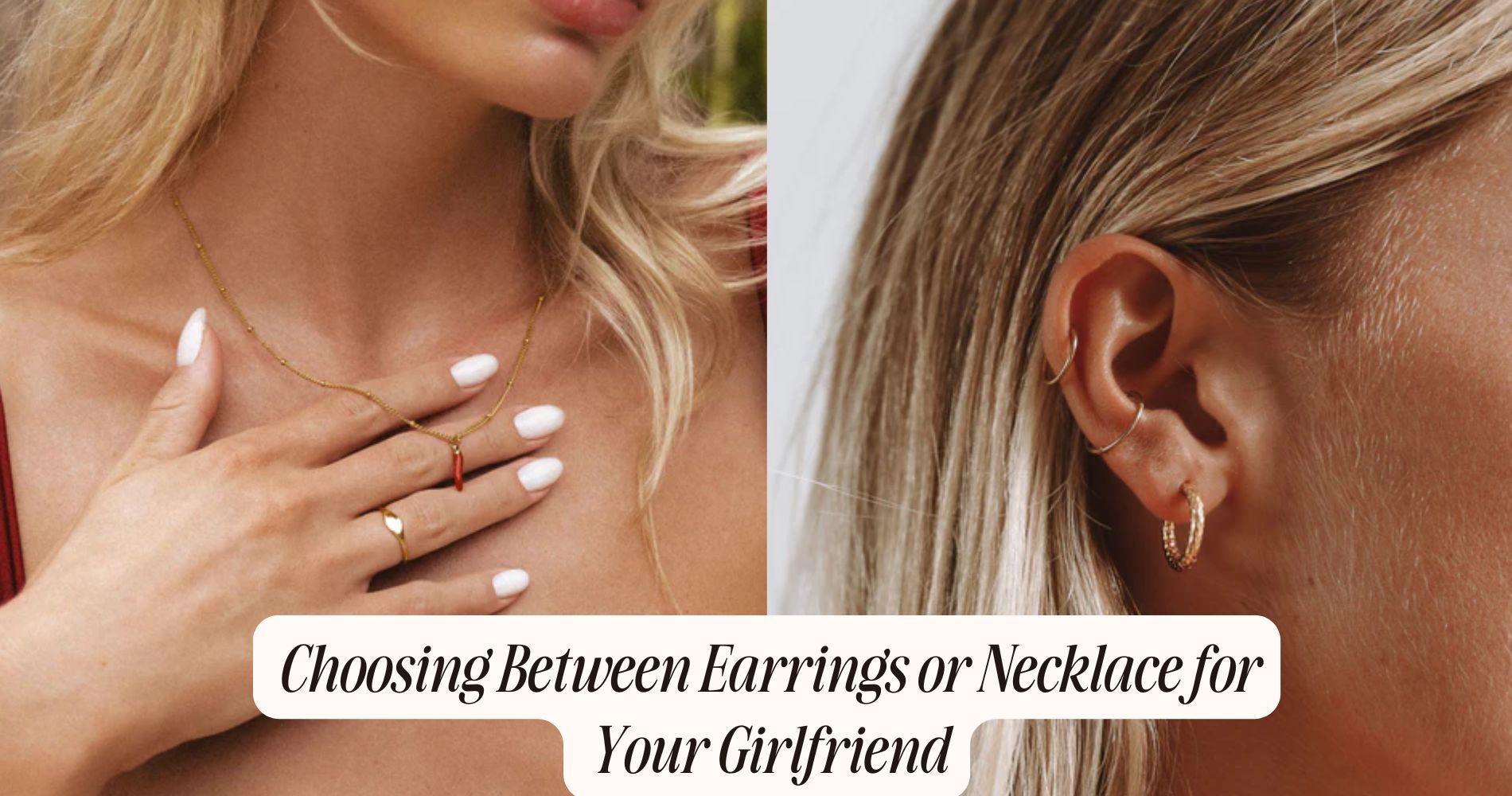
How is the Quality of a Pearl Judged?
Luster
Luster plays an essential role in evaluating pearl quality, as it directly influences the gem's visual appeal and perceived value. When you assess a pearl, you're not just looking at its surface; you're examining how light interacts with its layers. Luster importance can't be overstated, as it reflects the pearl's internal structure and the thickness of its nacre. A high-quality pearl exhibits a deep, reflective luster that enhances its brilliance.
You'll notice that luster variations can greatly affect your judgment. Pearls range from a dull, chalky appearance to a bright, mirror-like shine. Factors such as the type of pearl, the mollusk species, and environmental conditions during formation contribute to these differences. For instance, Akoya pearls often display a sharp, highly reflective luster, while Tahitian pearls may present a softer, more subdued sheen.
When evaluating pearls, take the time to compare these luster variations. A pearl with a rich, deep luster will generally command a higher price, as it indicates a well-formed gem with superior quality. By honing your eye for luster, you'll enhance your ability to judge pearl quality effectively.
Surface Quality
When evaluating pearls, the surface quality is vital, as it directly impacts both the gem's beauty and durability. You'll want to conduct a thorough blemishes evaluation to identify any imperfections that may affect the pearl's overall appearance. Common blemishes include spots, scratches, and pits, which can detract from the luster and visual appeal.
When examining a pearl, inspect it under good lighting and magnification to reveal any subtle flaws that mightn't be visible to the naked eye. The fewer blemishes a pearl has, the higher its quality rating. Remember, pearls with significant surface issues may not only look less attractive but can also be more susceptible to damage over time.
Surface treatments can also influence your evaluation. Some pearls undergo treatments to enhance their appearance or to conceal blemishes. Knowing whether a pearl has been treated is essential, as it can impact both value and care requirements. Always ask for documentation regarding any treatments before making a purchase.
Shape
While surface quality plays a significant role in pearl evaluation, the shape of a pearl is equally important, as it can greatly influence its aesthetic value and market demand.
When evaluating a pearl's shape, you'll encounter several categories in shape classification, including round, semi-round, drop, baroque, and more. Round pearls are typically the most sought after due to their perfect pearl symmetry, which enhances their appeal and value.
In contrast, baroque pearls, with irregular shapes, may lack symmetry but can possess unique charm and character. This can often lead to niche demand among collectors and designers who appreciate organic forms. The market trends will dictate the desirability of these shapes, with round pearls generally commanding higher prices.
When evaluating a pearl, you'll want to examine its shape closely. Even slight deviations from perfect symmetry can affect the pearl's overall value.
As you analyze, consider how the shape complements the pearl's luster and surface quality. Understanding the nuances of shape classification allows you to make informed decisions and appreciate the artistry behind each pearl's formation.
Size
When evaluating pearl size, precise measurement techniques are essential to obtaining accurate dimensions.
You'll find that size notably impacts a pearl's value, with larger pearls often commanding higher prices due to their rarity.
Understanding these measurement methods and their implications can enhance your ability to evaluate pearl quality effectively.
Measurement Techniques Explained
To accurately assess pearl quality, measuring their size involves precise techniques that determine both diameter and shape, which are vital factors in valuation.
You'll want to begin with a caliper or a micrometer to measure the pearl's diameter. This measurement is important since it directly influences the pearl classification, distinguishing between different grades and types based on size.
Next, consider the shape of the pearl. A perfectly round pearl is often the most desirable, but many pearls may exhibit slight imperfections. Use a digital gauge to measure the dimensions across multiple axes, allowing you to quantify deviations from a perfect sphere.
Understanding the nucleation process is also essential, as it impacts size and shape. When a bead or tissue is implanted within the mollusk, it dictates how the pearl will develop, influencing both its final size and the quality of the nacre layers formed.
Impact on Value
Size considerably influences a pearl's market value, as larger pearls are often rarer and more sought after due to their visual impact and perceived luxury. In the pearl industry, market trends indicate that buyers typically prefer pearls that exceed certain size thresholds, often starting at 7mm. The demand for larger pearls, such as those exceeding 10mm, is markedly higher, directly affecting their price point.
When you consider buyer preferences, you'll notice that unique sizes can create niche markets. For instance, while some buyers gravitate towards classic sizes, others may seek out oversized or even unconventional shapes, influencing how pearls are appraised. The rarity of large pearls, especially those with high-quality luster and surface quality, can lead to exponential increases in market value.
Conversely, smaller pearls may struggle to capture the same buyer interest, resulting in lower valuations. As market trends evolve, staying attuned to shifts in buyer preferences can help you navigate the pearl industry effectively.
Ultimately, understanding the impact of size on a pearl's value will enable you to make informed decisions, whether you're buying, selling, or appraising pearls.
Color
Color in pearls is an essential factor that greatly influences their value and appeal, as it encompasses a wide spectrum of hues, overtones, and the unique luster that each pearl exhibits.
When evaluating color, you should consider the primary hue, which can range from classic white to deep black, and various color variations such as pink, gold, and blue. Each color carries its own symbolism; for instance, white often represents purity, while black signifies elegance and mystery.
The overtone of a pearl complements its base color, adding depth and complexity. Overtone colors may appear as subtle tints, enhancing the overall beauty of the pearl. A well-balanced combination of base color and overtone can greatly elevate a pearl's desirability.
When judging pearls, you must also examine the uniformity of color. Pearls with consistent coloration typically command higher prices due to their rarity. Conversely, irregular color variations can be seen as imperfections, although some buyers may appreciate the uniqueness they offer.
Ultimately, a pearl's color isn't just a visual attribute—it's a vital determinant of its market value and aesthetic allure.
Nacre Thickness
Nacre thickness plays an essential role in determining a pearl's durability, luster, and overall quality, as it directly influences the pearl's ability to reflect light and exhibit a desirable sheen. The nacre, or mother-of-pearl, is formed through a biological process where the mollusk secretes layers of aragonite and conchiolin. The thickness of these nacre layers greatly impacts the pearl's visual and physical properties.
Thicker nacre results in a more lustrous pearl, enhancing its ability to refract light, which contributes to a deeper, richer appearance. Typically, a pearl with at least 0.5 mm of nacre is considered to have good quality; anything less may appear dull or fragile. You should also note that the layering process can vary among different types of pearls, influencing both the thickness and overall quality.
When evaluating nacre thickness, you'll want to inspect the pearl closely, as uneven layers can indicate poor-quality nacre formation. Ultimately, the thickness of the nacre not only reflects the pearl's quality but also its potential longevity, making it a vital factor in your assessment.
Origin
Understanding the origin of a pearl is essential, as it greatly influences its characteristics, value, and overall quality. Pearls can be classified into two main categories: natural pearls and those produced through pearl farming.
Natural pearls form spontaneously in the wild, resulting from an oyster's natural defense mechanism against irritants. This rarity often makes natural pearls considerably more valuable, as they're less frequently found and harvested.
On the other hand, pearl farming involves cultivating pearls through controlled conditions. In this process, technicians intentionally introduce an irritant into the oyster, prompting it to produce a pearl. The quality of farmed pearls can vary widely, depending on factors like the species of oyster, water quality, and farming techniques used.
When judging a pearl's origin, consider the type of environment it was produced in. Natural pearls are typically unique, with irregularities that speak to their organic origins. In contrast, pearls from farming operations may exhibit more uniformity due to selective breeding and standardized processes.
Ultimately, understanding these distinctions helps you appreciate the value and uniqueness of each pearl you encounter.
Matching
When matching pearls for jewelry design, it's crucial to take into account their luster, shape, and size, as these attributes greatly influence the overall aesthetic and harmony of the piece.
You should begin by employing specific matching techniques that allow you to analyze and categorize pearls based on these criteria. For instance, when evaluating luster, look for pearls that exhibit a similar reflective quality, as this creates a cohesive visual flow.
Next, consider the shape; round pearls often pair well with other round ones, while baroque pearls can introduce an intriguing contrast. When it comes to size, aim for consistency in dimensions to avoid visual dissonance. The ideal matching criteria involve selecting pearls that not only complement each other but also enhance the overall design intent of the jewelry piece.
Additionally, pay attention to the surface quality and color; matching pearls within a similar color palette can elevate the design.
Frequently Asked Questions
What Are the Different Types of Pearls Available?
You'll find various types of pearls, including natural and cultured pearls. Freshwater and saltwater pearls differ in origin, while baroque and keshi pearls offer unique shapes. Each type varies in luster, size, and overall appeal.
How Does the Environment Affect Pearl Quality?
The environment substantially impacts pearl quality. You'll notice that natural habitats with stable water temperatures promote healthy oyster growth, enhancing nacre layering and ultimately leading to more lustrous, durable pearls. Environmental fluctuations can negatively affect this process.
Can Pearls Be Dyed or Treated for Color?
Yes, pearls can be dyed or treated for color enhancement. Dyed pearls undergo a coloring process, while treated pearls may receive treatments to improve their appearance. Both methods can greatly affect their market value and aesthetic appeal.
How Should Pearls Be Cleaned and Maintained?
To clean and maintain your pearls, use gentle cleaning techniques like a soft cloth and mild soap. Avoid harsh chemicals, and remember maintenance tips include storing them separately to prevent scratches and preserving their luster.
What Is the Average Lifespan of a Pearl?
The average lifespan of a pearl can range from several decades to over a century, depending on its formation and environmental factors. A pearl's value often increases with age, enhancing its allure and investment potential.
Conclusion
In conclusion, when you judge a pearl's quality, consider factors like luster, surface quality, shape, size, color, nacre thickness, and origin. Each element plays an essential role in determining its overall value.
Additionally, understanding grading systems can help you make informed decisions when purchasing or evaluating pearls.
By focusing on these characteristics, you can appreciate the intricate beauty and craftsmanship involved in creating these natural treasures, ensuring you choose a pearl that truly stands out.
























Leave a comment
This site is protected by hCaptcha and the hCaptcha Privacy Policy and Terms of Service apply.